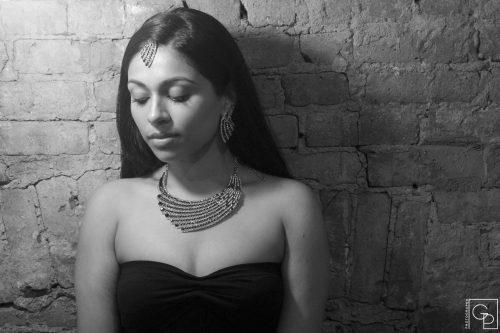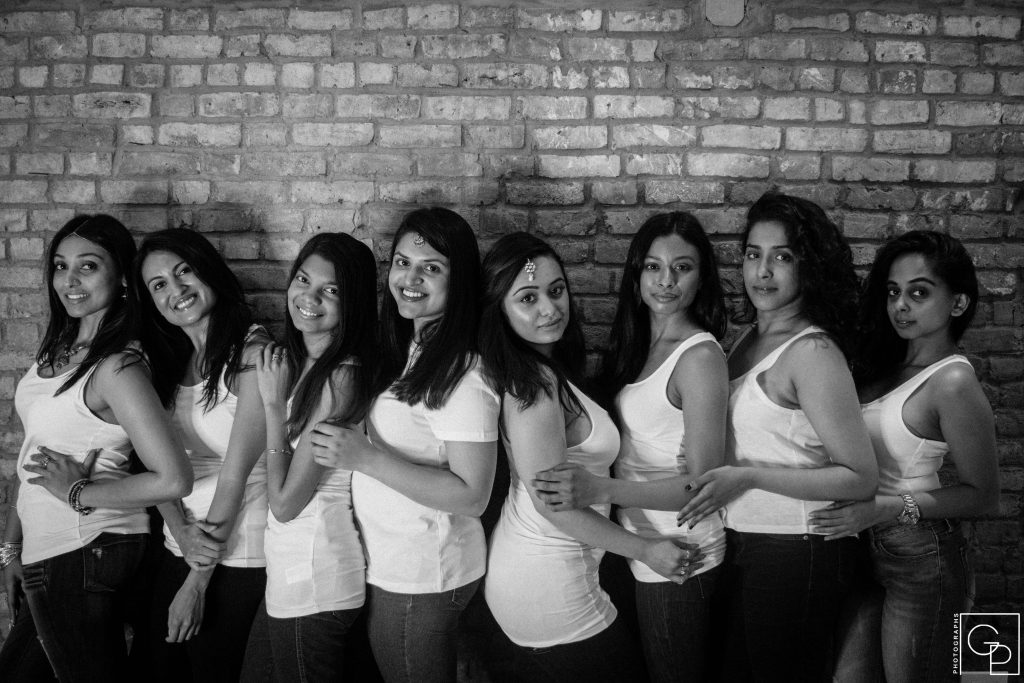
The following introduction is written by the creator of the #BareFacePlay photo series and professional makeup artist, Jasmin Rahman. All photos are courtesy of Grishma Patel. The models are Brown Girl contributors from the New York area.
The #BareFacePlay photo series was born out of the deep sadness I felt each time I encountered a woman who told me she couldn’t step foot outside of her house without makeup.
As you’re reading this, you’re probably thinking it’s highly ironic, given my career as a professional makeup artist and aspiring model. Why wouldn’t I want women to wear makeup every day? I love all things makeup and beauty, but I believe makeup was created to enhance our natural, God-given features, and create works of art.
The problem in my eyes exists when women use these enhancements daily and feel they cannot do certain tasks, go certain places, and do not feel they are at their fullest potential without them.
The fear of others seeing us in our most natural, purest, vulnerable form, cripples women in many different ways. We all live through different struggles and traumatic experiences relating to our self-esteem and body image. These traumas can be notions or expectations of community’s beauty standards, our family’s history, domestic violence, sexual assault, an accident, illness or just the ebbs and flows of life. We all have insecurities and imperfections we feel the need to mask daily, through hair removal, makeup, clothing—you name it! Society trains us to believe our imperfections make us unworthy of our goals and we have become blind to the natural beauty that lies within us. Self-love, acceptance, and allowing our skin to breathe, allowing ourselves to be truly vulnerable in the presence of others has become rare.
#BareFacePlay is a challenge to dig deep within your soul and ask yourself when you’re putting makeup on or getting dressed, questions such as: Why am I making this choice? What would happen if I left the house without makeup on or without covering that imperfection? What would happen if I posted a photo on social media like this? What would happen if I went to a social gathering with my natural face in tow?
#BareFacePlay is a challenge to ask yourself what your biggest insecurities are, bare them all to the world lovingly, and to embrace them once and for all.
Some of the contributors at Brown Girl Magazine bared their biggest insecurities with no makeup for the camera and shared their personal stories of empowerment. We encourage you to do the same by posting a makeup-free selfie and share your story using the hashtags #BareFacePlay.
Be smart, hip, beautiful, and bare!
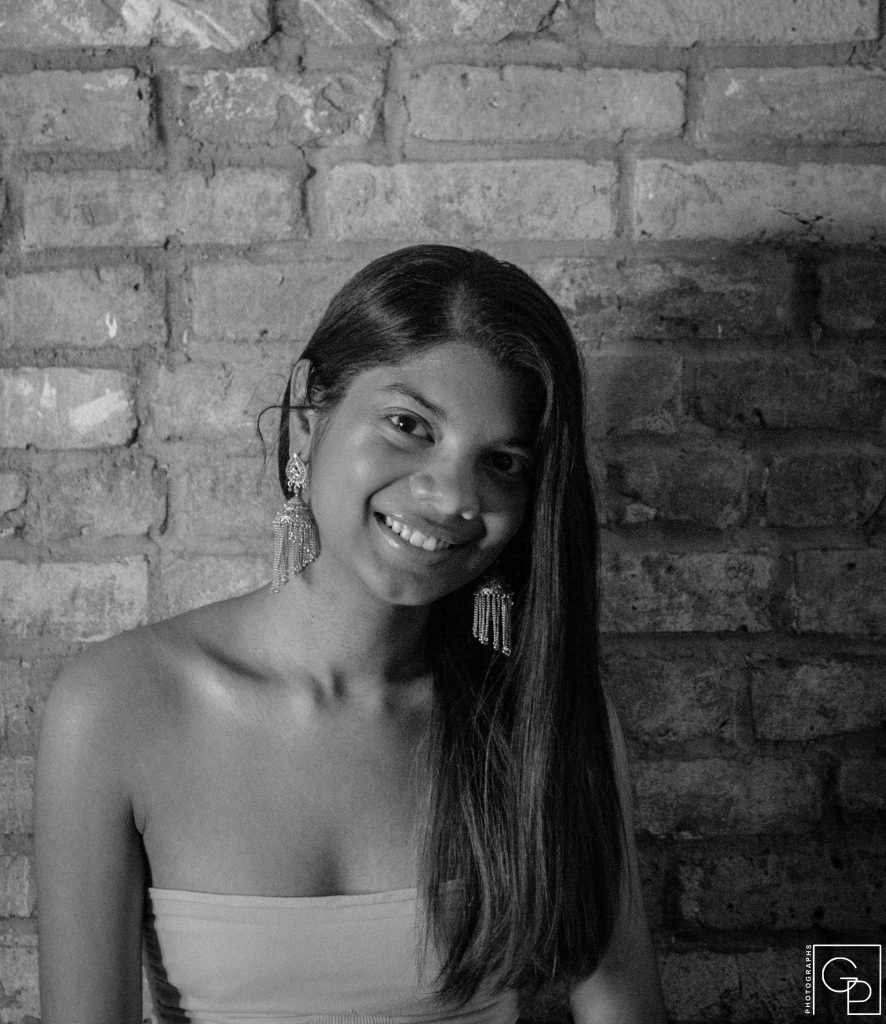
For a long time, I have felt that my body did not belong to me. There have been so many cultural and societal restrictions placed on it, so many others telling me what I can and can’t do with it, so many unwelcome hands laid on it, one too many instances of violence, sexual assault, and other violations have made their lasting marks and left me feeling unworthy and unclean. My body has endured so much manhandling that, consequently, I’ve never gotten the sense that I truly have any autonomy of this vessel that houses my soul.
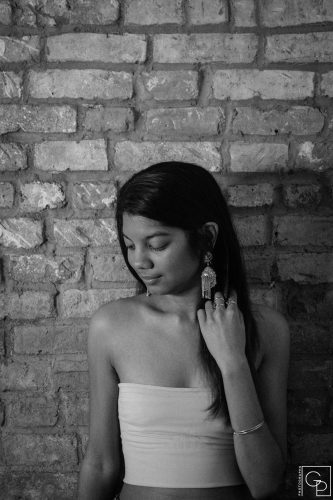 And then there was my own unkindness towards myself. I wasted too much time lamenting all the flaws I saw – nose too big, skin too brown, face not pretty at all, not tall enough, chest too flat, no womanly curves, etc. — when I should have been celebrating and recognizing that these weren’t flaws at all but made me different and beautiful in my own right. I had all but dissociated with my body and the journey back to claiming it as my own, and truly loving it, seems to be an endless work in progress. But, I’m doing my best. Being kind to yourself is easier said than done but the effort is worth it because feeling confident and loving yourself is absolutely priceless and one of the best feelings there is.
And then there was my own unkindness towards myself. I wasted too much time lamenting all the flaws I saw – nose too big, skin too brown, face not pretty at all, not tall enough, chest too flat, no womanly curves, etc. — when I should have been celebrating and recognizing that these weren’t flaws at all but made me different and beautiful in my own right. I had all but dissociated with my body and the journey back to claiming it as my own, and truly loving it, seems to be an endless work in progress. But, I’m doing my best. Being kind to yourself is easier said than done but the effort is worth it because feeling confident and loving yourself is absolutely priceless and one of the best feelings there is.
If there’s anything I’ve learned so far, it is that I know I’m beautiful just the way I am, regardless of what anyone says or what has been done to me. Sometimes I believe it, sometimes I don’t, but that’s part of the process. With hope, I move forward on my journey to self-love and encourage others to love and celebrate themselves for exactly who they are.
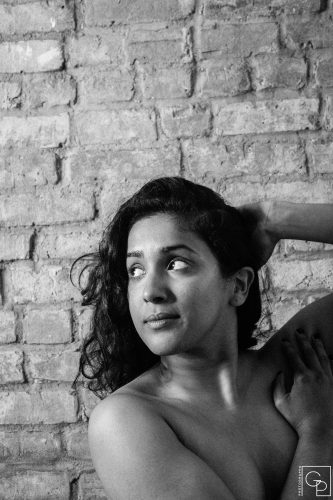
The #BareFacePlay photo shoot was a unique learning experience. I was inspired to participate in the project because I enjoy trying new experiences, especially those that scare me. I wanted to be more comfortable in my own body and embrace my uniqueness. I also think young women are exposed to unrealistic beauty images in the media. These images skew our perception of beauty and tolerance. I wanted to counter those images to help people appreciate the unique features of others, and embrace natural beauty.
The photoshoot was awkward, relaxing, and fun. I was unsure how to pose for shots and unsure how my body would react to a new situation. However, the reflection time was long and powerful. I walked away more comfortable about embracing my fears and my own skin. Initially, I criticized my pictures but eventually realized I had to learn to stop condemning my image. As soon as I accepted what I saw, I was willing to let go of hypercritical thoughts.
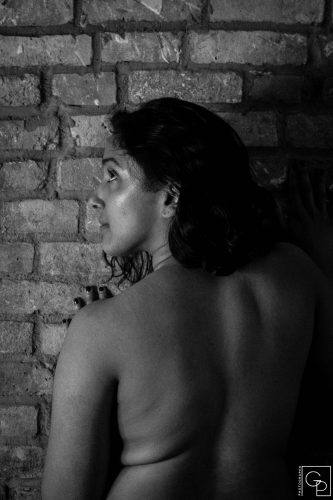 Before attempting to create societal change, I had to change my own personal attitude toward bare beauty. I also reminded myself that the other participants had similar emotions. I was not alone in this experience. At the end of the day, embracing yourself is a process — it doesn’t happen overnight. It is an aggregate of several instances of “putting yourself out there” over a long period of time. This photoshoot was one such instance and it was freeing.
Before attempting to create societal change, I had to change my own personal attitude toward bare beauty. I also reminded myself that the other participants had similar emotions. I was not alone in this experience. At the end of the day, embracing yourself is a process — it doesn’t happen overnight. It is an aggregate of several instances of “putting yourself out there” over a long period of time. This photoshoot was one such instance and it was freeing.
I want to encourage people to participate the #BareFacePlay challenge. It may seem scary but it ends up being fun. You learn more about yourself, especially your fears and comforts. I hope this project helps people increase their self-awareness, reduce self-deprecating thoughts, and learn to see themselves in a positive light.
by Jasmin Rahman
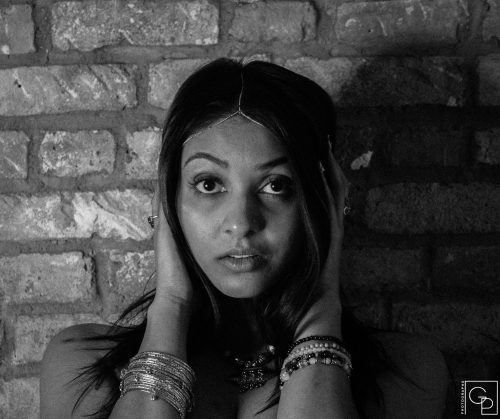
Self-love is an ongoing struggle for me. I grew breasts, body hair, and started having acne well before my peers. I battle a war with my weight to the point of almost having an eating disorder many times. My body grew before my skin was ready, followed by weight fluctuations leaving me with stretch marks on my thighs, back, hips, arms, and breasts. The genetic circles under my eyes tell a tale of sickness, sleep deprivation, stress or just “I was born this way”.
A pimple, cut or burn will scare me. I carry a scar on my left arm from one of my abusive ex-boyfriends. I attempt to scrub away my tan every summer after being in the sun to avoid comments from family.
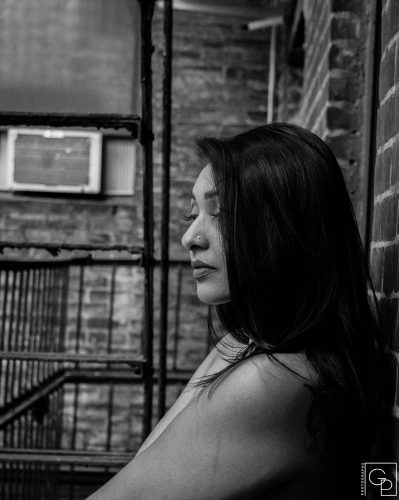 I learned to love myself and my body for all of its peculiar features after realizing I can’t make everyone around me happy, and their happiness isn’t necessarily mine. I can’t scrub away any of these imperfections or scars left on my body by itself or others.
I learned to love myself and my body for all of its peculiar features after realizing I can’t make everyone around me happy, and their happiness isn’t necessarily mine. I can’t scrub away any of these imperfections or scars left on my body by itself or others.
I must love, accept, and forgive myself before I can expect anyone else to and I should use these features that I’ve always felt to be my shortcomings as a way to relate to other women and girls, and show them that if I can work as a model, makeup artist and be in front of a camera and choose not to wear makeup regularly, so can they.
This body I curse for being so heavily scarred tells a story, the story of me. How lucky am I to carry my story on my being? To carry these memories written on my flesh.
by Aysha Qamar
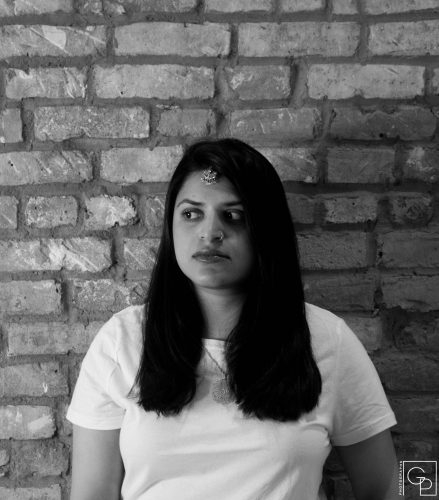
I’ve struggled with the way I look for as long as I can remember. If it wasn’t my weight, it was my skin. There was always something. I always found a flaw.
I hated pictures. I was far too critical of myself, always over analyzing the way I look each time — to the point I stopped taking them all together.
I remember where it all started. I was first called a skeleton in elementary school. From then on my weight always fluctuated. From being too skinny to being too fat, I was never happy in my own skin. I was never happy being me. I remember when others pointed out that I had various discolorations and hyperpigmentation. To some, I was too light to be South Asian and to others, I was too dark to be Pakistani.
For the years to follow—I found myself never believing compliments, dreading pictures, and having trouble buying clothes because nothing ever looked good.
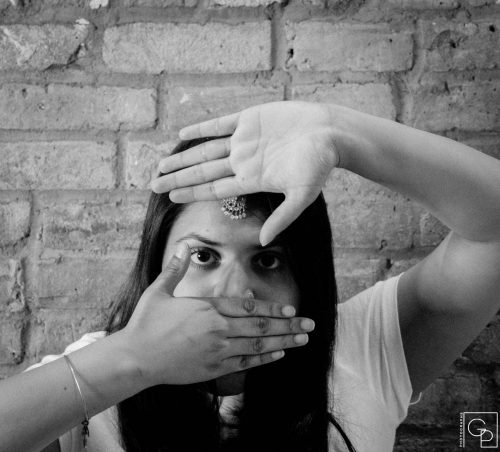
My biggest insecurity has always been my hands. More often than enough, people have commented on the skin discoloration and roughness of them. Many have commented that one is slightly darker than the other. They’ve been called manly. I used to subtly hide them, in my pockets or use one to cover the other — but no more. You may call my skin flawed — but I no longer have anything to hide, I call it mine.
Now, here I am years later and I can finally say I am comfortable in my own skin. At the heaviest weight I have ever been, I am happy. I may not currently be at my ideal weight, but I am finally healthy and know I can get there. I have finally accepted myself for who I am, flaws and all. I have even begun to love pictures and myself.
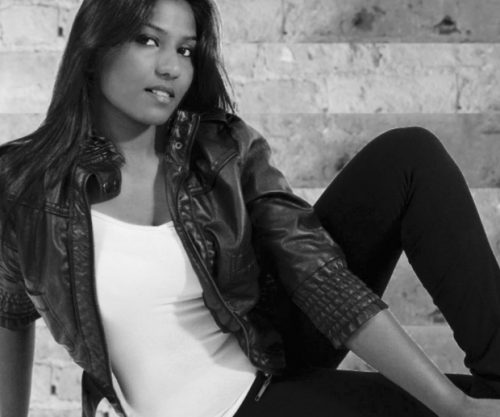
‘I’m an Indian-American woman with dark skin who likes to act and direct movies.’
If that sentence threw you off, you’re probably not alone. There’s a long-standing notion, especially in the South Asian community, that the combination above doesn’t fit together properly. Being dark skinned is something that needs to be “fixed” in order to be considered “beautiful” or “successful” or even “confident.”
Although raised in New Jersey, I’ve grown up in awe of the Indian Film Industry and of my idols Madhuri Dixit, Priyanka Chopra, and Anushka Shetty; all beautiful, fair-skinned, Indian actresses.
I tried everything I could to “fix” my issue: fairness creams, packs, treatments, dermatology appointments, makeup (even Snapchat filters!). These worked temporarily but somehow in an in-person meeting, I was never actually comfortable in my own skin. I was always very self-conscious and became very sensitive to the topic of skin color. Eventually, this insecurity overshadowed my self-confidence and I began undermining my dream for the one field I thought I was very passionate about—films.
But it’s time to finally come to terms with some things. My passion for something isn’t dictated by pigmentation. I can’t change my skin color. I can’t change society’s Eurocentric perception of beauty. I can, however, change how I react.
Ever since I’ve directed my first short film “Now and Then,” I acted as the main lead in another short film “Ehsaas” and am now able to voice my “insecurity” and realization publicly for the first time in this post.
So yes, I have dark skin…so what?
Contrary to what most may think, I have forever struggled with loving my body. I have been on a roller coaster ride from gaining a bunch of weight to losing a lot and feeling inadequate whenever I gained even a few pounds afterward.
I completely dedicated myself to fitness for a period of time and lost close to 50lbs. One would think that would make me happy but I was more dissatisfied and scared than ever to gain back any weight. I was even more critical of my body and never seemed to be at a place where I was content. When I think back at it now, I think part of me cared less and was happier with my body when I was heavier because I did not know any different.
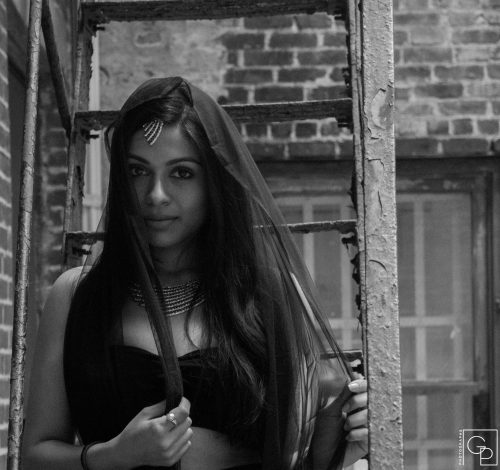 I hated my stretch marks, refused to wear short sleeves before, hated my stomach and never wore a bikini until two years ago.
I hated my stretch marks, refused to wear short sleeves before, hated my stomach and never wore a bikini until two years ago.
I’ve been on every diet in the books, exercised to the point of exhaustion, even cried over how much I disliked my reflection. I’ve cried in the fitting rooms in front of my mother, even after a gorgeous boat trip in the Caribbean where we all wore bikinis. I soon learned not everyone saw eye to eye with me and I was absolutely not fishing for compliments but it came off that way. I was simply trying to get my friends to see what and how I saw my body, unattractive.
Time has gone and my priorities have evolved and although the ghosts of my past still chime in here and there, I am trying to block them out completely.
More recently, I’ve tried to maintain a healthy lifestyle and believe that is the most important factor but many times, it alludes me to actually love my body and forgive it for all its been through.
I’ve never been nice to my body and it’s time I let that go and embrace it. My body represents my struggle and it’s been there for me to take me through all the feats I’ve needed to accomplish to get where I am today. How dare I hate something like that?
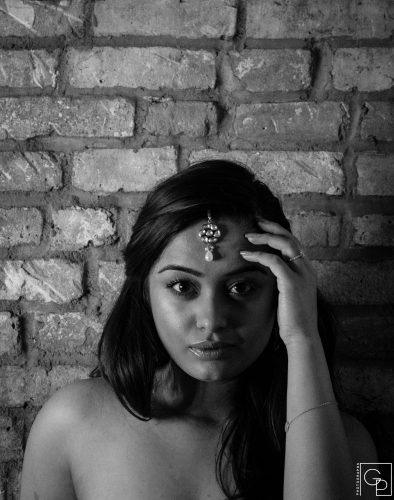
I grew up with a uni-brow, a fuzzy mustache, big chunky glasses, short blunt hair with bangs and two shiny buck teeth. To say I constantly felt ugly is an understatement.
My skin battled and continues to battle with a constellation of pimples, red itchy scars, blackheads, pores, dark circles, bleach, laser equipment, countless waxing strips, and lots of Indian woman threading hundreds of unwanted spiky black hair. To make myself feel better, I started applying foundation and powder at the modest age of 10. None of the colors were mine because I would steal them from my mother and secretly apply in the bathroom with bad lighting.
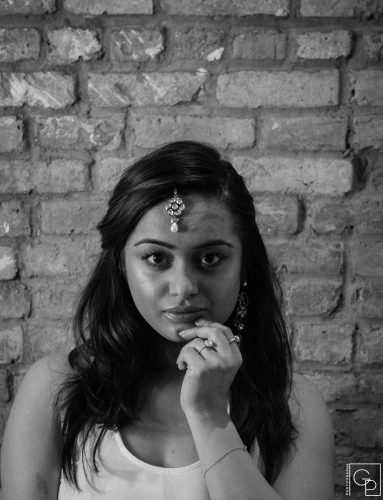
A few years of poor makeup application and dozens of stolen products later, I became addicted to makeup like a heroin addict obsessed with his needle. I never stepped out of the house without a thick layer of foundation and the whole nine yards of makeup products I’ve refrained myself from listing. This madness continues well into my late twenties.
My wedding is around the corner and I am marrying a man who sees my beauty inside and out, I have an amazing support group who continues to shower me with confidence and love, but that doesn’t stop me from applying a layer of makeup.
I won’t lie, I fought against the idea of this photo shoot. I wasn’t ready for it and it took a lot of guts to get in front of the camera with a face I sometimes pretend to not recognize. I flirt with the idea of going bare face to the office or to a girlfriend’s house. Maybe it will take me a few more badass photo shoots to feel this gutsy on the daily.
At Brown Girl, we believe in the power of inner beauty. Join the movement by tagging us on Instagram, Facebook orTwitter with the hashtag #BareFacePlay.
